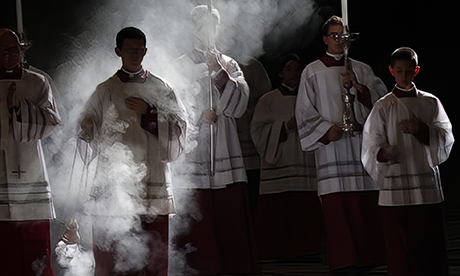Synodal feedback identified the need for liturgical experiences that are life-giving and accessible to Catholics. Because many New Zealand Catholics no longer identify with symbols and signs used in the Sacred Liturgy, the liturgy has become a foreign land. People who feel this way might describe the Liturgy as boring, clericalist and formal and themself as lost, disengaged, and uninterested.
The above experience is not valid for all Catholics in New Zealand, especially those from India and South Eastern Asia, where Catholicism is hundreds or thousands of years old. One reason for this distinction is that they come from sacral cultures.
In a sacral culture, everyone is a believer in a deity, and cultural norms are framed by religious practice. Individuals are included or excluded based on their cultural religiosity and religious practice, which may or may not have any depth in personal belief. The dominant expression of sacral cultures in contemporary parishes is the hyper-devotionalism linked to an underdeveloped penitential approach to faith that is still priest-centric. Clergy and laity in this construct see no absolute need for synodal thinking.
Thus, the issue of non-engagement in the Liturgy and the life of the parish is predominantly one for indigenous New Zealand Catholics of all ethnicities. In this group, we see a growing separation between their capacity to worship and the capability to symbolise. We see this in the internal struggle with religious symbolisation in funerals and school masses.
The capacity to worship and the capability to symbolise
The distinction between the capacity to worship and the capability to symbolise is evident at funerals. Capacity is the larger concept, the maximum amount something or someone can do or contain, and capability is the extent of someone’s or something’s ability.
The breakdown of the relationship between capacity and capability to symbolise creates a tension between what we—the Church—want to say through our liturgical rites and what the family wants to say as it uses the rites. As a result, having a say becomes a conflictual experience. Who has the more significant say or, the greater “right” to speak: us through our rites or the family through their need?
We see this tension in school masses and the growing awareness that many schools need to use a liturgy of prayer rather than a Mass when they gather. Whereas once Catholic schools were defined by established norms of cultural Catholicism, now they are increasingly defined by pre-catechetical teaching and prayer. Religious Education is being replaced by pre-catechumenal evangelisation that focuses on the scriptures, not the sacraments.
As a result of the change in New Zealand Catholics, we can no longer presume that the capacity to worship and the capability to symbolise exist in the same person to the same degree. Nor can we presume that people want to symbolise as we would like them to, using our ritual language. Thus, the tension we experience is real, personal and existential. It challenges our presumptions of when liturgical rites should be celebrated and by whom they should be celebrated. It calls forth a response from the Catholic community to this situation.
Bridging the gap between the capacity to worship and the capability to symbolise was once the job of cultural religiosity and cultural or customary rituals. Baptism, for example, was both a ritual act of worship and a cultural or customary act of the family. Many still want this when they ask for a family or “private” baptism and avoid a Sunday Mass or group baptism.
In schools, liturgies have become a delivery system of prayer, song, community and scripture fit to the capacity and capabilities of the people present. This is not a dumbing down but a growing up on our part, as we recognise that people need to be met where they are. It means we need to use the framework of evangelisation and conversation when we act liturgically.
Some may see this as exclusionary; I see it as an honest attempt to respond to a person’s or a group’s spiritual/faith development. Discernment is called for.
Accepting that the frameworks of catechesis and sacramental mediation are beyond some people is not surrender to a secular cultural demand, though it is to take cognisance of it as the dominant culture forming New Zealand Catholics and Catholics in New Zealand.
It alerts us not to impose the Sacred Liturgy on people because that is what we want them to have or because we lack the liturgical imagination to think with an evangelising mind. When we do this, we devalue the Liturgy and cheapen the currency of Grace. Consequently, our response must be careful, generous and creative because evangelisation, catechesis, and the Liturgy are gifts that need to be given at the right time and in ways appropriate to the people they are being given to.
- Joe Grayland is a theologian and a priest of the Diocese of Palmerston North. His latest book is: Liturgical Lockdown. Covid and the Absence of the Laity (Te Hepara Pai, 2020).
News category: Analysis and Comment.




